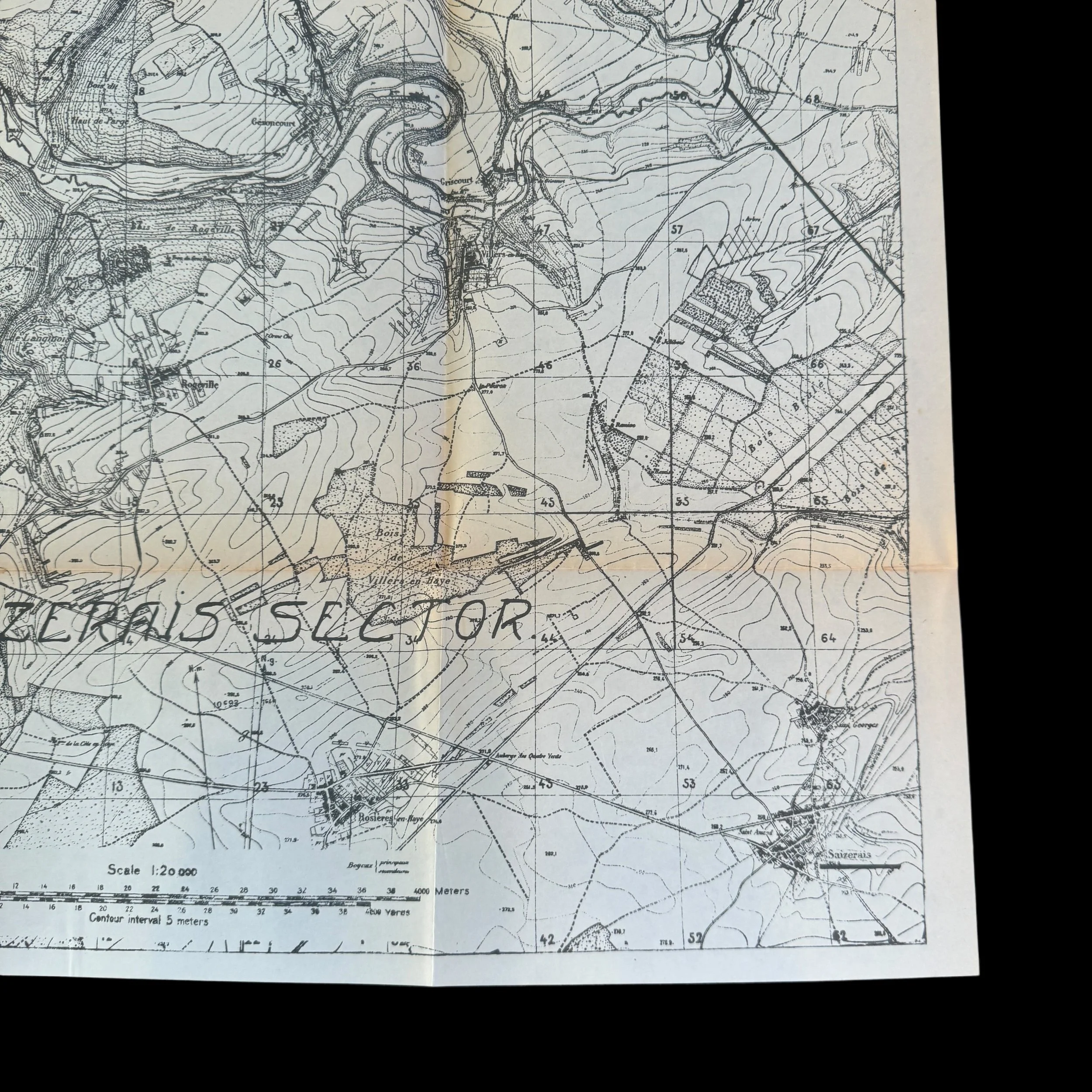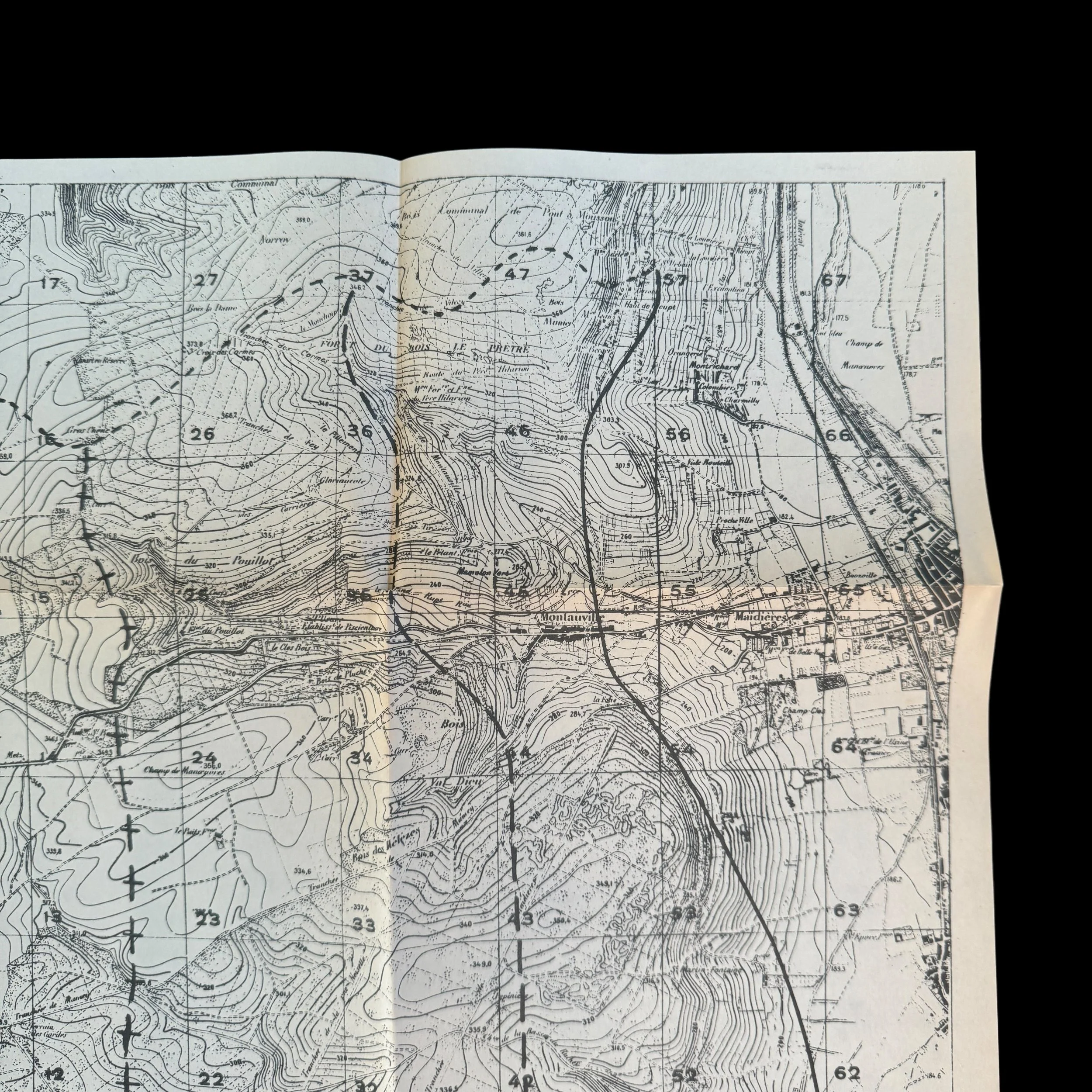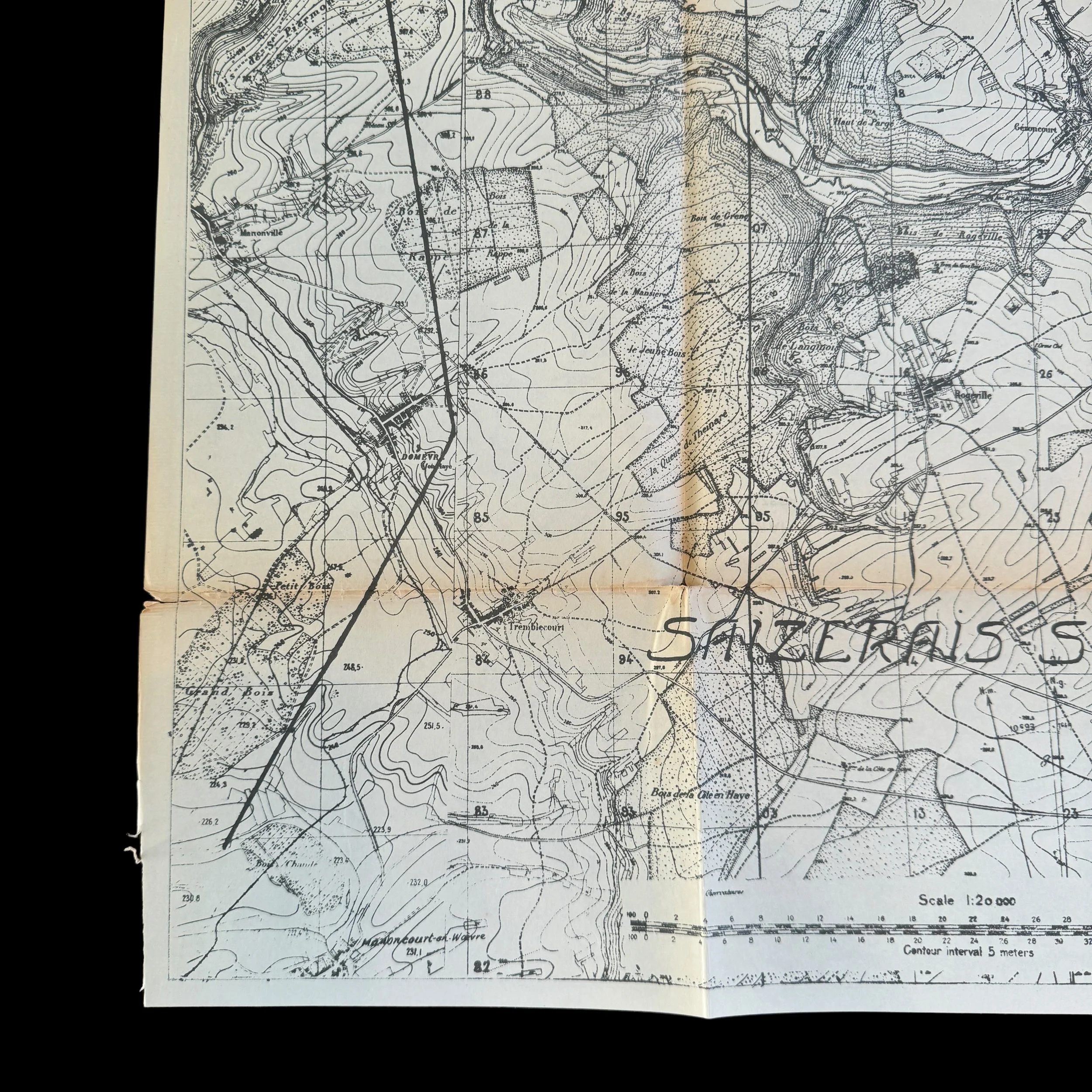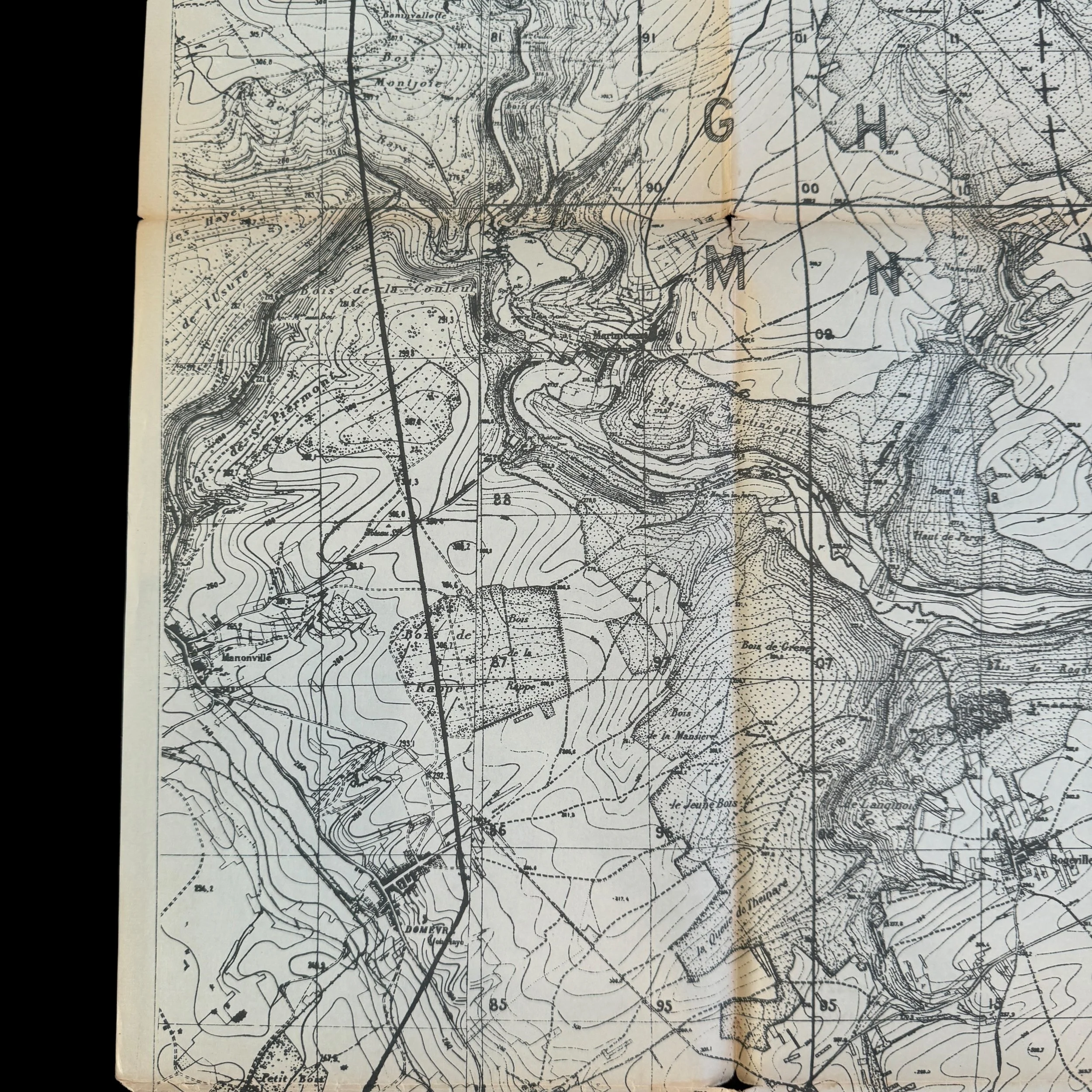RARE! World War I "Saizerais Sector" Saint-Mihiel Offensive Lorraine France Map
























RARE! World War I "Saizerais Sector" Saint-Mihiel Offensive Lorraine France Map
Comes with a hand-signed C.O.A.
This rare and museum-grade World War I map shows the Saizerais Sector of the Saint-Mihiel Offensive. The Saizerais Sector held a significant strategic position during World War I. This sector was part of the larger Saint-Mihiel salient, a bulge in the German lines that had persisted since their initial advances in 1914. The salient posed a continuous threat to the Allied lines and logistics, making it a key target for operations aimed at reducing German pressure and reclaiming occupied territories.
Geographic and Strategic Importance
Located in the Lorraine region of France, the Saizerais Sector was positioned between the Meuse River to the west and the Moselle River to the east. This positioning provided a natural defensive advantage, which the Germans had fortified extensively. The terrain in this area was characterized by rolling hills and dense forests, interspersed with small villages and farmland, making it a challenging environment for offensive operations. The proximity to key logistical routes further amplified its strategic value.
Early War Period
In the initial years of the war, the Saizerais Sector saw sporadic skirmishes and trench warfare typical of the Western Front. Both sides invested in extensive trench systems, fortifications, and barbed wire defenses. While not the site of major battles during this period, the sector remained a place of constant vigilance, patrols, and minor engagements. German forces fortified their positions, creating a formidable defensive network that would later pose a significant challenge to Allied forces.
The Saint-Mihiel Offensive
The most notable military action in the Saizerais Sector occurred during the Saint-Mihiel Offensive in September 1918. This offensive was a pivotal moment for the American Expeditionary Forces (AEF), marking their first major independent operation. General John J. Pershing, the commander of the AEF, sought to eliminate the Saint-Mihiel salient, thereby straightening the Allied lines and improving their ability to launch future offensives.
The Saint-Mihiel Offensive commenced on September 12, 1918, involving a multi-pronged attack aimed at encircling the salient and cutting off German forces. The operation saw the participation of over 500,000 American troops, alongside French units, showcasing the growing strength and coordination of the Allied forces.
Combat Participation and Divisions
Several divisions played crucial roles in the Saizerais Sector during the Saint-Mihiel Offensive:
1st Division (United States): Known as "The Big Red One," the 1st Division was one of the first American units to arrive in France. They were positioned in the southern part of the salient and were instrumental in the initial breakthrough.
26th Division (United States): The "Yankee Division," composed primarily of National Guard units from New England, participated in the attack on the northern face of the salient. Their efforts were crucial in meeting up with forces attacking from the south and west.
42nd Division (United States): The "Rainbow Division," noted for its diverse composition, fought in the eastern sector, contributing to the encirclement of German forces.
2nd Division (United States): Including elements of the U.S. Marine Corps, the 2nd Division played a critical role in the reduction of the salient’s southern flank.
Outcome and Aftermath
The Saint-Mihiel Offensive was remarkably successful, achieving its objectives in just four days. By September 16, the salient had been reduced, and the Allied forces had captured approximately 15,000 German prisoners and significant quantities of materiel. This victory boosted Allied morale and demonstrated the effectiveness of the American forces in large-scale operations.
The reduction of the Saint-Mihiel salient and the control of the Saizerais Sector also had broader strategic implications. It allowed the Allies to shorten their lines, improve logistical support, and prepare for the subsequent Meuse-Argonne Offensive, which would be one of the final and most significant offensives of the war.
Broader Impact
While the Saizerais Sector itself was not the site of prolonged or particularly bloody battles compared to other areas of the Western Front, its strategic importance cannot be overstated. The success of the operations in this sector demonstrated the maturation of the AEF and the effective coordination between American and French forces. The lessons learned and the experience gained during the Saint-Mihiel Offensive would inform subsequent operations and contribute to the ultimate Allied victory in November 1918.
The Saizerais Sector's role in World War I, particularly during the Saint-Mihiel Offensive, underscores the importance of strategic positioning and the impact of coordinated multinational efforts. The operations in this sector not only alleviated a longstanding threat posed by the German salient but also showcased the growing prowess of the American military on the global stage. As part of the broader mosaic of the Western Front, the Saizerais Sector’s story is one of strategic triumph, collaborative success, and the relentless drive towards victory in the face of entrenched and formidable defenses.